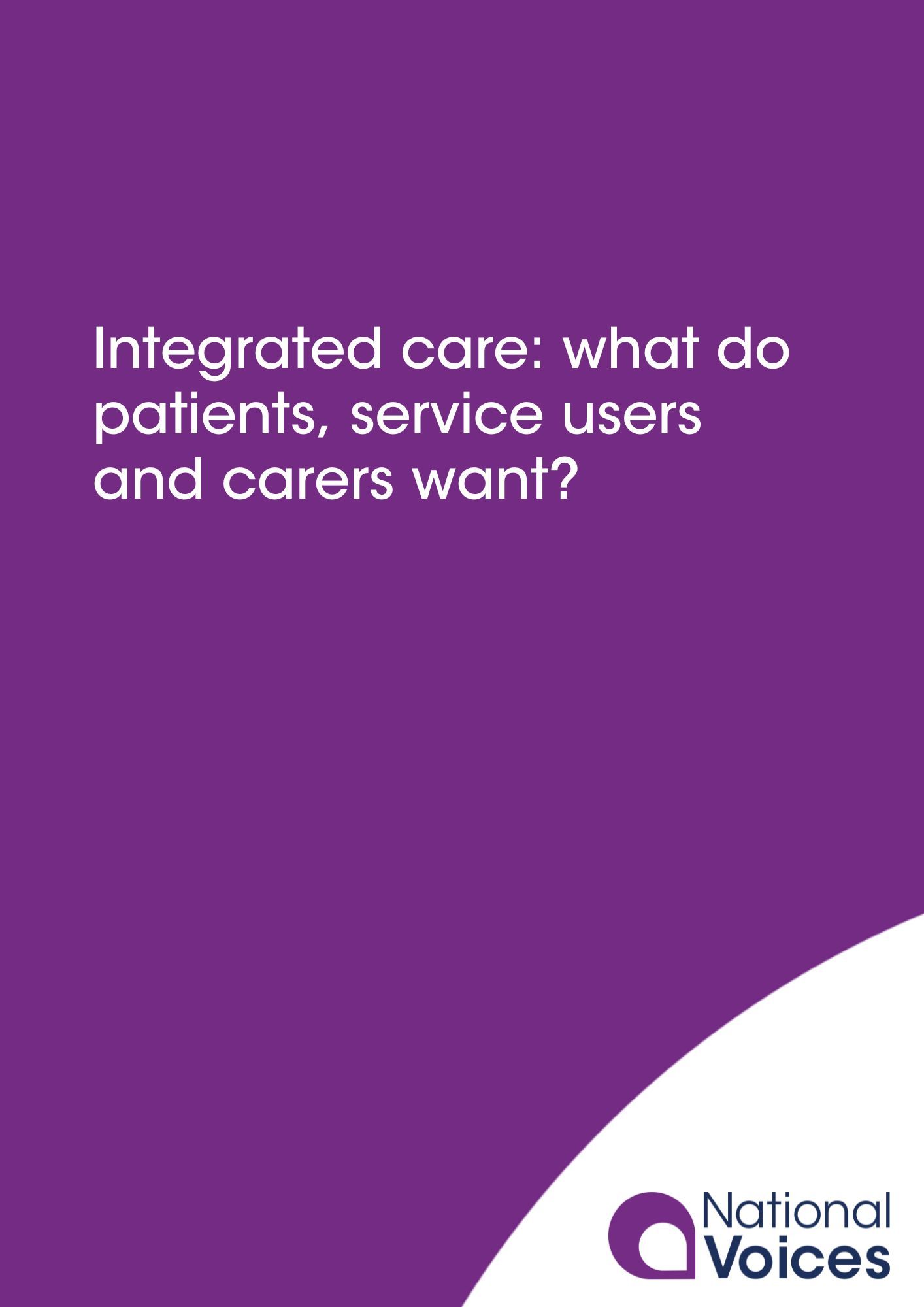
Integrated care: what do patients, service users and carers want?
- Person-centred care
- Integrated care
These aspects are found in individual consultations and in team working. But integrated care arrangements need to be crystal clear about the roles and contact that various professionals will have with service users.
People want many other things from healthcare, including continuity of care and smooth transitions. These require planning and co-ordination. They may not require organisational ‘integration’. By efficiently deploying multi-professional resources, co-ordinated care systems should be better able to deliver the other things patients require: fast access, effective treatment, respect for their preferences, support for self-care, and the involvement of family and carers. Hence ‘integration, integration, integration’ was the top demand from patient, service user and carer organisations during the ‘pause’.
Patients have little interest in organisational/institutional priorities or mergers. They want organisations not to argue between themselves or send conflicting messages. They expect professionals to work together as a ‘team around the patient’, and they want services to work together likewise: that is, to come together at the point they are needed, and to meet people’s needs in the round.
People understand that there are resource limitations, and indeed are often self-limiting in the use they make of services and professionals’ time. But they want to know clearly what their entitlements are (not just to care but to support and finance), and what costs they might incur, at any key point on their journey. They want services easily to agree on these and not to argue between themselves. They want obvious efficiencies to be achieved – not least in use of their own time – for example by making it possible for multiple appointments to happen on one day; or by linking diagnostics and consultations seamlessly together. They want agreed packages of care to be delivered without delay.
‘Care is care is care’ for the person who needs it. Divisions into ‘primary’, ‘secondary’, ‘community’ and ‘social’ care are relatively meaningless. (Note, however – care from ‘social services’ is still associated with stigma by many older people; NHS care is not)
The people for whom integration is most relevant, especially those with long term conditions, consistently say that they are looking for the ‘system’ to combine two things in one place:
- knowledge of the patient/service user/carer as a person, including their home circumstances, lifestyle, views and preferences, confidence to care for themselves and manage their condition(s), as well as their health status and symptoms
- knowledge of the relevant condition(s) and all options to treat, manage and minimise them, including knowledge of all available support services
People know they may need a variety of professionals and support services, but within this they want a single trusted point of liaison, to which they can have recourse as necessary, where the above knowledge is held. They expect this person/service to advise them on how to take next steps and, ideally, to co-ordinate their care or to help the patient/carer to co-ordinate it..
People tend to ‘personify’ this where they find something approximating it. Older people with long term conditions cite their clinical nurse specialist. Those families whose child has complex needs and who have a ‘key worker’ system give positive feedback.
“You need the person with the backpack of knowledge who can walk beside you.”
Carer of spouse with Alzheimer’s
If you would like to read this paper in an alternative format, please get in touch.